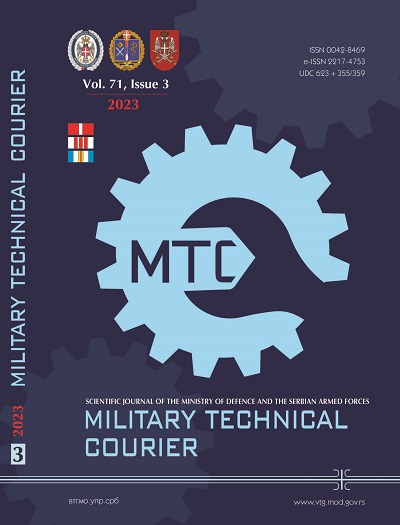Formation and application of hydrogen in non-ferrous metallurgy
Abstract
Introduction/purpose: Hydrogen is the most abundant element in the universe (75 % by mass) and the lightest element (with a density of 0.00082 g/cm3) which consists of only one proton and one electron. Because of its presence in many different forms such as gaseous hydrogen, its plasma species, water, acid, alkalline, ammmonia and hydrocarbons, it has various applications in different industrial disciplines.
Methods: Different hydrometallurgical and pyrometallurgical methods are considered in order to point out many different processes such as formation of hydrogen, reduction of metallic oxides and chlorides, and electrochemical reactions such as hydrogen overvoltage and the spillover effect. Ultrasonic spray pyrolysis enables the formation of very fine aerosols which can be used for the production of metallic powders.
Results: Hydrogen formation was observed during the dissolution of metallic allloys with hydrochloric acid. The reduction of metallic oxides and metallic chlorides by hydrogen leads to the formation of metallic powders. Metallic powders were collected by a new developed electrostatic precipitator.
Conclusion: Hydrogen can be applied in different reduction processes for the production of metallic powders. Recycling processes can be used for the formation of hydrogen. A new research strategy for powder production is proposed combining recycling of the black mass of used Li-Ion batteries, ultrasonic spray pyrolysis, and hydrogen reduction.
References
Agrawal, A., Kumari, S., Bagchi, D., Kumar, V. & Pandey, B.D. 2006. Hydrogen reduction of copper bleed solution from an Indian copper smelter for producing high purity copper powders. Hydrometallurgy, 84(3-4), pp.218-224. Available at: https://doi.org/10.1016/j.hydromet.2006.05.010.
Crundwell, F.K., Moats, M.S., Ramachandran, V., Robinson, T.G. & Davenport, W.G. 2011. Chapter 27 - Hydrogen Reduction of Nickel from Ammoniacal Sulfate Solutions. In: Extractive Metallurgy of Nickel, Cobalt and Platinum Group Metals, pp.347-354. Elsevier. Available at: https://doi.org/10.1016/B978-0-08-096809-4.10027-9.
Gürmen, S., Güven. A., Ebin, B., Stopić, S. & Friedrich, B. 2009. Synthesis of nanocrystalline spherical cobalt-iron (Co-Fe) alloy particles by ultrasonic spray pyrolysis and hydrogen reduction. Journal of Alloys and Compounds, 481(1-2), pp.600-604. Available at: https://doi.org/10.1016/j.jallcom.2009.03.046.
Hage, J.L.T., Reuter, M.A., Schuiling, R.D. & Ramtahalsing, I.S. 1999. Reduction of copper with cellulose in an autoclave; an alternative to electrolysis? Minerals Engineering, 12(4), pp.393-404. Available at: https://doi.org/10.1016/S0892-6875(99)00019-9.
Lasia, A. 2019. Mechanism and kinetics of the hydrogen evolution reaction. International Journal Hydrogen Energy, 44(36), pp.19484-19518. Available at: https://doi.org/10.1016/j.ijhydene.2019.05.183.
Rodriguez, J., Stopić, S. & Friedrich, B. 2007a. Continuous electrocoagulation treatment of wastewater from copper production. World of Metallurgy - ERZMETALL, 60(2), pp.89-95. ISSN: 1613-2394.
Rodriguez, J., Stopić, S., Krause, G. & Friedrich, B. 2007b. Feasibility assessment of electrocoagulation towards a new sustainable wastewater treatment. Environmental Science and Pollution Research - International, 14(7), pp.477-482. Available at: https://doi.org/10.1065/espr2007.05.424.
Shen, H., Li, H., Yang, Z. & Li, C. 2022. Magic of hydrogen spillover: Understanding and application. Green Energy & Environment, 7(6), pp.1161-1198. Available at: https://doi.org/10.1016/j.gee.2022.01.013.
Sista, K.M. & Sliepcevich, C.M. 1981. Kinetics of continuous hydrogen reduction of copper from a sulfate solution. Metallurgical Transactions B, 12, pp.565-568. Available at: https://doi.org/10.1007/BF02654328.
Stopić, S.R., Ilić, I.B., Nedeljković, J.M., Rakočević, Z.L.J., Šušić, M.V. & Uskoković, D.P. 1997a. Influence of hydrogen spillover effect on the properties of Ni particles prepared by ultrasonic spray pyrolysis. Studies in Surface Science and Catalysis, 112, pp.103-110. Available at: https://doi.org/10.1016/S0167-2991(97)80828-2.
Stopić, S.R., Ilić, I.B. & Uskoković, D.P. 1997b. Effect of Pd, Cu, and Ni additions on the kinetics of NiCl2 reduction by hydrogen. Metallurgical and Materials Transactions B, 28, pp.1241-1248. Available at: https://doi.org/10.1007/s11663-997-0079-2.
Vieceli, N., Vonderstein, C., Swiontek, T., Stopić, S., Dertmann, C., Sojka. R., Reinhardt, N., Ekberg, C., Friedrich, B. & Petranikova, M. 2023. Recycling of Li-Ion Batteries from Industrial Processing: Upscaled Hydrometallurgical Treatment and Recovery of High Purity Manganese by Solvent Extraction. Solvent Extraction and Ion Exchange, pp.1-16. Available at: https://doi.org/10.1080/07366299.2023.2165405.
Copyright (c) 2023 Srećko R. Stopić, Bernd G. Friedrich

This work is licensed under a Creative Commons Attribution 4.0 International License.
Proposed Creative Commons Copyright Notices
Proposed Policy for Military Technical Courier (Journals That Offer Open Access)
Authors who publish with this journal agree to the following terms:
Authors retain copyright and grant the journal right of first publication with the work simultaneously licensed under a Creative Commons Attribution License that allows others to share the work with an acknowledgement of the work's authorship and initial publication in this journal.
- Authors are able to enter into separate, additional contractual arrangements for the non-exclusive distribution of the journal's published version of the work (e.g., post it to an institutional repository or publish it in a book), with an acknowledgement of its initial publication in this journal.
- Authors are permitted and encouraged to post their work online (e.g., in institutional repositories or on their website) prior to and during the submission process, as it can lead to productive exchanges, as well as earlier and greater citation of published work (See The Effect of Open Access).

